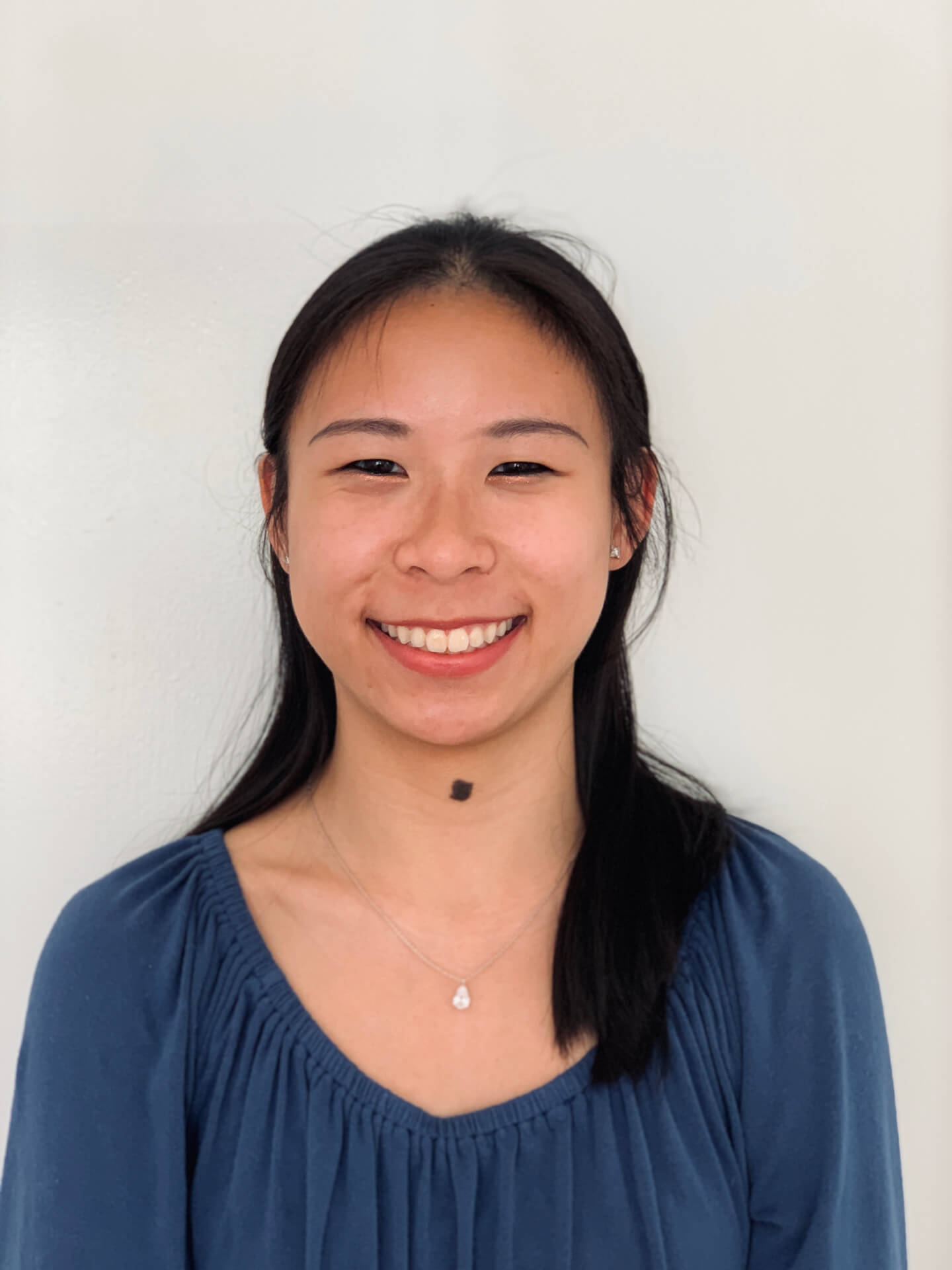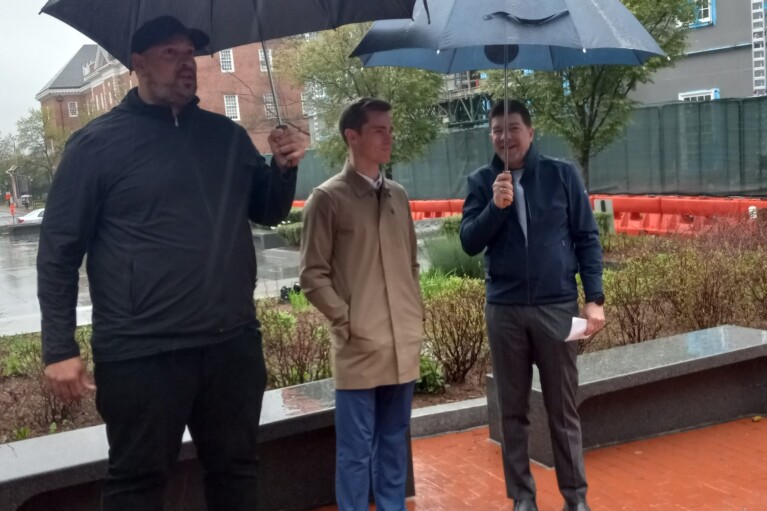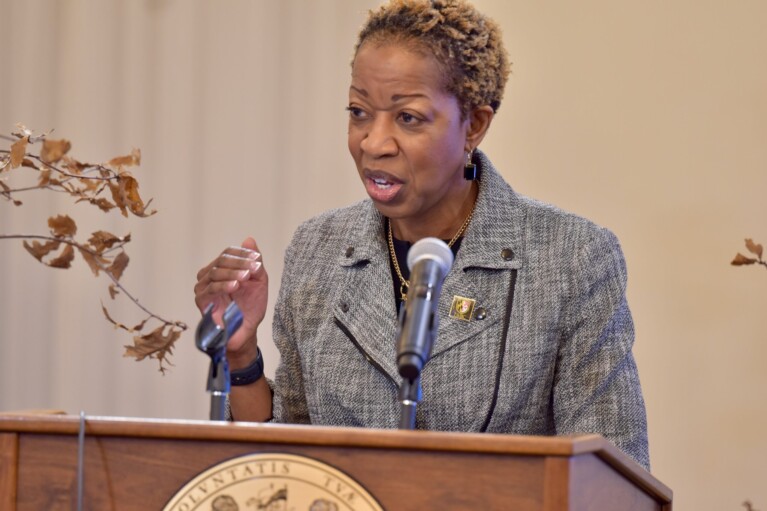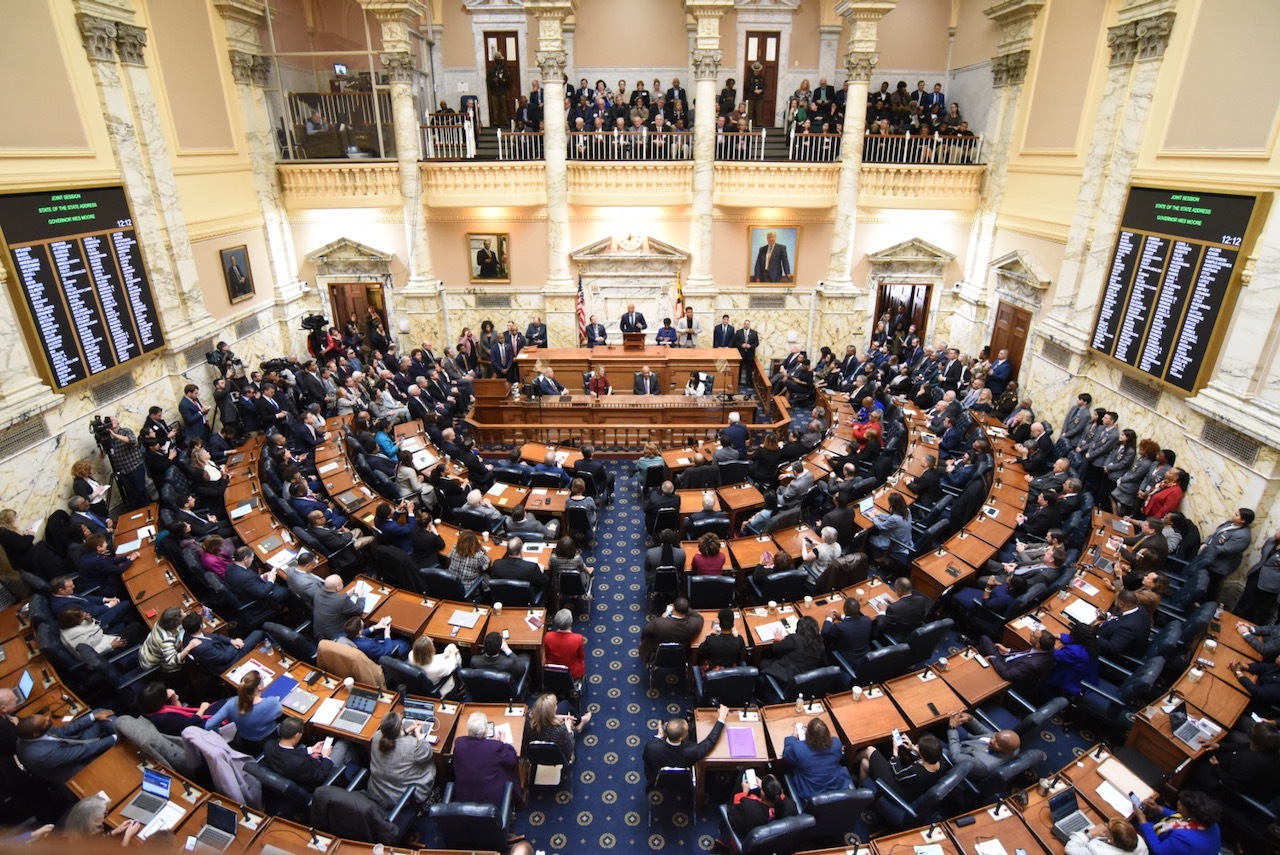Women on the Ballot: Emerge Maryland Sees Jump in Candidates This Year
As women candidates have made progress nationally and in Maryland over recent election cycles, a training program for Democratic women is seeing an increase in the number of candidates on the 2022 ballot.
Emerge Maryland — an organization dedicated to electing more Democratic women to public office — has seen a big jump in candidates since last cycle.
In 2018, 46 women who graduated from Emerge Maryland were on the ballot and this election cycle, 63 graduates of the program filed to run for federal, state and local offices.
“I see a sea change over the last eight years in the number of women running — people are becoming more accustomed to seeing women on ballots across the state and across the nation,” said Diane Fink, the executive director of Emerge Maryland, which launched 10 years ago.
Fink said she has noticed more women — 76% of Emerge Maryland alumni on the ballot — in the “New American majority,” who are typically young, unmarried and people of color, seeking office this year.
Younger women are entering a more friendly space, after seeing models of themselves already serving in office, Fink said. “They can see themselves in them and say ‘Hey if she can do it, I can do it,’” Fink said. “That is a huge pull for these women — to know that the trail has been blazed for them and they just need to follow it.”
Representation by women in Maryland’s General Assembly has grown by double-digits since the start of this term. An additional 10 women are now in the state legislature through appointments after retirements, resignations or deaths.
Maryland now ranks fifth in the country for its proportion of women lawmakers, who make up 43.6% of the state legislature. And in 2019, House Speaker Adrienne A. Jones (D-Baltimore County) became the first Black woman to serve as speaker in Maryland — and just the third Black woman to be speaker of a state House in U.S. history.
The number of women legislators is critical to growing the pipeline that could send female elected officials to higher office, where women have seen less success in Maryland.
One person can break through the glass ceiling at the higher statewide office and congressional levels, and a bench of women will be able to follow her, Fink said.
Not only are about 30 Emerge Maryland candidates running for the first time in 2022, some of the program’s alumnae are also seeking higher office — including Brooke Lierman, a Democratic delegate from Baltimore who is running for state comptroller, and former Baltimore City Councilmember Shannon Sneed, who is running as lieutenant governor with Democratic gubernatorial candidate Tom Perez.
“They’re not looking for more prestige or power. They’re just looking to expand on the work they’ve already done in the offices they hold now as they look toward a higher office,” Fink said.
One way to measure success for women in an election cycle is to count the number that are running for office, Kelly Dittmar, the director of research and scholar at the Center for American Women and Politics at Rutgers University, said at a press conference last month.
Another way to measure women’s electoral success is by analyzing women as a percentage of candidates overall. In 2020, women made up nearly half of Democratic nominees for the U.S. House of Representatives, according to the Center for American Women and Politics.
Nationwide, the number of women running so far have not surpassed record numbers at the congressional and gubernatorial levels, but candidate filing deadlines in some states remain open. And a record number of Republican women have filed for U.S. Senate and governor. A record number of Black women, 20, have filed as candidates for the U.S. Senate, compared with the previous record number of 13.
Democratic women, on the other hand, are unlikely to surpass candidacy records in congressional and gubernatorial races based on current numbers, according to Chelsea Hill, the data services manager at the Center for American Women and Politics at Rutgers University.
At the national level, redistricting will also affect women incumbents in the 2022 elections; the seats of 13 women in Congress have been deemed “less safe” for re-election and six were labeled as “more safe,” according to the Center for American Women and Politics. There are no women incumbents representing Maryland in Congress, but Fink said that she thinks women will eventually do well with the recent changes to Maryland’s congressional map.
In the last two election cycles, record-breaking years for women in congressional races generally, no women won Maryland top statewide office or congressional seats. Donna Edwards, former U.S. Representative for the 4th District, was the last woman to represent Maryland in the U.S. House from 2008 to 2017, the same year U.S. Sen. Barbara Mikulski (D) retired.
This year, Edwards is seeking to return to her old seat and is among multiple women running for Congress in Maryland, including former Prince George’s County Del. Angela Angel (D), who is also seeking the Democratic nomination to succeed Rep. Anthony Brown (D).
Brown is leaving the seat to run for attorney general and faces former Baltimore City District Court Judge Katie Curran O’Malley in the Democratic primary.
In the 1st District, Heather Mizeur, a former Montgomery County delegate, is running to unseat Maryland’s lone congressional Republican Rep. Andrew P. Harris (R). And Baltimore County progressive activist Brittany Oliver is running to unseat 10-term Rep. C.A. Dutch Ruppersberger (D) in the 2nd District; multiple credible Republicans have filed to seek the GOP nomination in the newly-drawn district, led by Nicolee Ambrose, who has spent the past decade as Maryland’s Republican National Committeewoman.
Maryland remains one of 19 states that has never elected a woman governor. In 1994, Kathleen Kennedy Townsend (D) was elected as lieutenant governor, the first and only woman to hold the position, and unsuccessfully ran for governor in 2002. Lieutenant governors in Maryland aren’t elected independently; they are chosen by and run on tickets with specific gubernatorial candidates.
Nationwide, eight incumbent women governors are seeking re-election and 23 women are running for open seats in eight states, according to data from the Center for American Women and Politics.
In Maryland, former Commerce Secretary Kelly M. Schulz is the only female gubernatorial candidate, running for the Republican nomination.
The primary election in Maryland will be held on July 19 with early voting beginning on July 7, and the general election being held on November 8.




 Creative Commons Attribution
Creative Commons Attribution